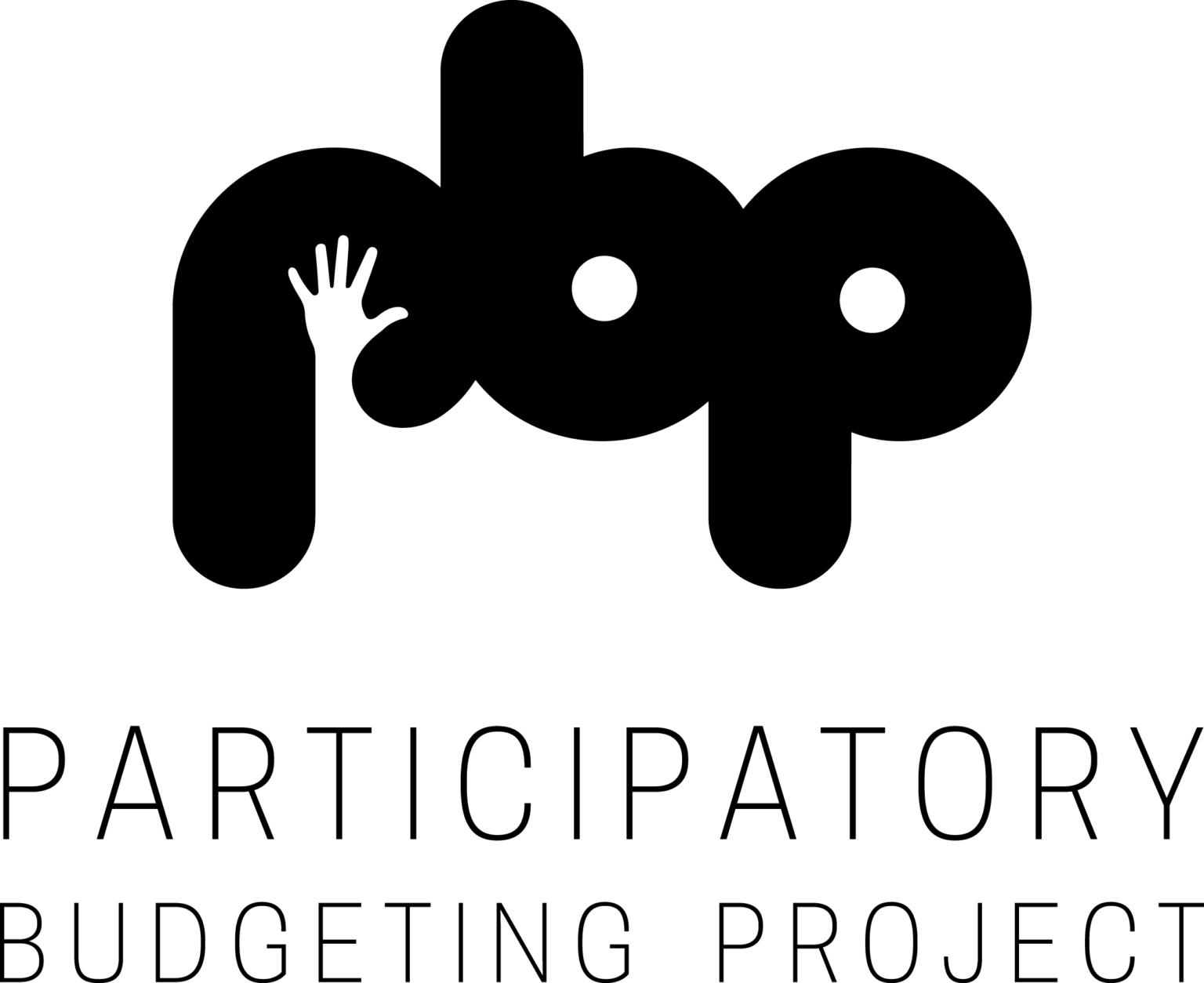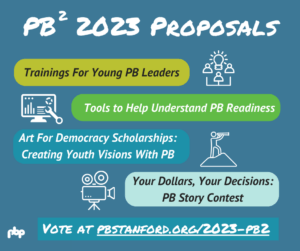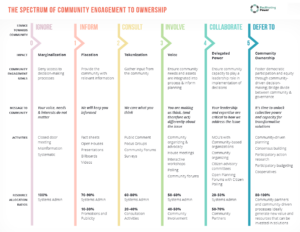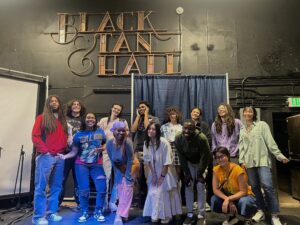PB Buffalo Kicks off with a conscious step to improve the environment and other community projects! PB Buffalo organizer and Community Coordinator at the Clean Air Coalition (CACWNY), Natasha Soto shares this amazingly informative narrative of Buffalo’s environmental campaign turned PB process! Natasha has been working with Clean Air since 2011 and has been involved in multiple campaigns with Buffalo residents to bring about social change and redirect city funding back to communities, especially low-income communities that are disproportionately affected by hostile polluting agents. We asked Natasha to share her story on launching PB Buffalo and how her passion for the environment and public health transformed into Buffalo’s first PB process!
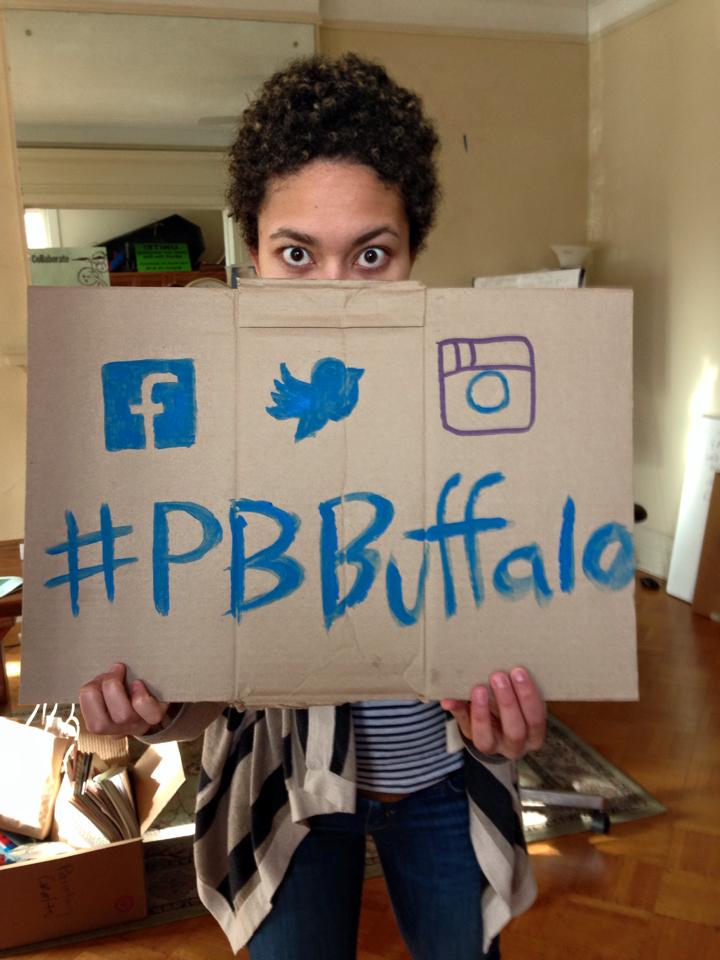
I first learned about Participatory Budgeting (PB) while researching ways a public bridge authority could contribute financially to a neighborhood I was working with- the lower West Side. Because of our proximity to Canada, there are four international border crossings that can be used from Buffalo, one in particular, the Peace Bridge gets about five-thousand diesel spewing freight trucks passing through it daily. Even though there are three other bridged with truck carrying capacity, the Peace Bridge, adjacent to a low-income community of color, gets two-thirds of the truck traffic. Depending on border traffic or the number of custom agents at the inspection booths wait times at the bridge can be hours long usually causing backups in the plaza and sometimes spilling onto local streets inundating the community with carcinogenic diesel exhaust, exacerbating asthma (which is four times the national average on the West Side) and other respiratory problems, covering homes in soot and furthering the crumbling of our street infrastructure.
Naturally PB was incredibly appealing; a percentage of the Peace Bridge’s $12 Million profits from tolls going back into the neighborhood that is sick from diesel exhaust to help with air monitoring, air filters, street/ road repair and bring some long needed investment into the community.
While we’re talking about PB to anyone who would listen and researching budgets and other PB processes, one of our campaigns is in the middle of a court case. Nearly 10 years ago, residents came together who were worried their health problems were linked to the industrial pollution in their neighborhood. They banned together, tested the air, pounded pavement and began a successful campaign against Tonawanda Coke Corporation, a coke manufacturing plant. The company was emitting large amounts of benzene, a known human carcinogen. And they were successful! Their organizing resulted in a raid of the plant and the arrest and indictment of the environmental control manager. The company signed a consent order with the US EPA that has resulted in an 86% reduction in benzene emissions. And in 2013, a jury found the company guilty of violating the Clean Air Act and the Resource Conservation and Recovery Act- this is only the second criminal indictment under Title V of the Clean Air Act. Fines from these violations could be up to $200 million.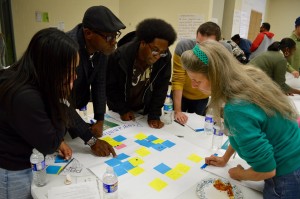
After the verdict was delivered, the Clean Air Coalition of WNY developed a list of principles and values we believed should guide decision-making on how fines will be spent:
∙ Community Control. Tonawanda residents and workers have been deeply impacted by air pollution from Tonawanda Coke. They have driven this campaign for accountability and should continue to lead decision making in the future
∙ Transparent, Democratic Decision-Making. Any decision that is made about fines should be public, transparent and democratic. No closed door deals.
∙ A commitment to environmental justice. Low-income people, people of color and workers are most deeply impacted by pollution. Therefore, any fines should go to solutions that address real problems in marginalized neighborhoods and high-risk workplaces
∙ Neighborhood Knowledge. Residents first brought this problem to the attention of local authorities. Therefore community knowledge about solutions should be central to the decision-making process.
In sum, residents who are most impacted by pollution should decide how the potential fines will be spent. We thought a process modeled after PB made the most sense.
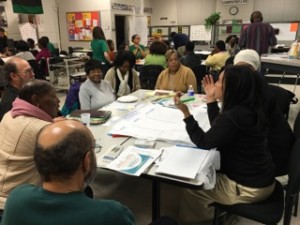

Over 500 residents came out to vote for potential projects for Tonawanda. The winning projects were submitted to the judge, the Environmental Protection Agency and the Dept. of Justice who ultimately, unfortunately, awarded funds to community based projects submitted separately from the ones voted on by residents.
Encouraged by our first PB- like process, we pushed even harder in Buffalo. We started attending budget hearings and meetings at City Hall, applied to present at the PB conference, held teach-ins and workshops, invited experts from NYC and St. Louis to speak at town halls, had meeting after meeting with our elected officials. We had great partners at City Hall who were pushing alongside us, Councilmen LoCurto, Rivera, Pridgen and Wyatt as well as organizational partners like Heart of the City Neighborhoods and the Coalition for Economic Justice. We gained traction with residents and at City Hall and in May $150,000 was allocated to be decided on by residents!
We have just wrapped up our General Assemblies in a district that has 33,286 residents (85% black, 9.5% white, 3% Asian), with a poverty rate of 37% and where less than 12% of residents participate in elections. It is a very exciting district to pilot PB in because of its resident demographics, its economic and political history. There was so much energy at the assemblies- folks were so excited that the district was the first pilot PB Buffalo process and that they could generate ideas for problems they have been seeing in their neighborhoods for years. There were even a number of residents who attended multiple assemblies!
Our Budget Delegate Orientation is next week and we can’t wait to read through all the project ideas, from first glance there have been some really good ideas like air monitoring along a major highway that divides the city, cleanup of a brownfield in a new business district, community market space and improvements to sidewalks and street lighting.
We are also piloting a texting feature that allows residents to participate that way. Our voting will take place at the end of March- stay tuned!

